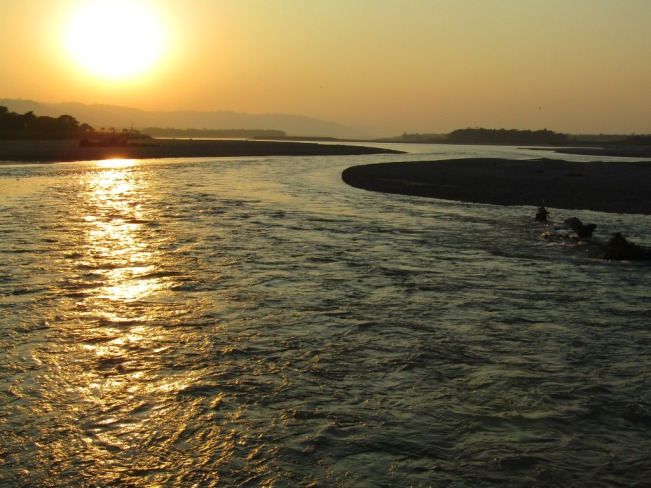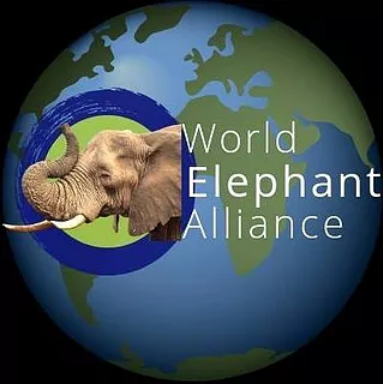(This blog post is reproduced with permission from Animal Nature Connect)

Early December 2019 while in Sauraha Nepal I reached out to Sudha Dhakal by email. Sudha was listed as the contact person for a new elephant sanctuary I wished to visit – I read this sanctuary was to be created in Sauraha. Sudha replied to my inquiry the same day I sent it, inviting me to get together with her the next day. Sudha requested my professional advice explaining she was working on registering the sanctuary.
9:00 am December 8th, 2019 Sudha picked me up at my hotel on her motorbike which is called a scootie. She asked me if I had any commitments to attend to later in the day while explaining the sanctuary board decided Sauraha was not the right location for their sanctuary. I shared my day was free. Sudha handed me a helmet. We were off to Golaghat.
Leaving Sauraha, then leaving Tandi Bazaar now traveling on the main highway I realized I didn’t exactly know where Golaghat was located. Before leaving my hotel I sent a message to a friend sharing that I would be spending time with a person I didn’t know, her name and what we were doing. As an avid hiker this safety protocol is common, we often carpool with people we don’t know. Excited to be traveling on a scootie to a new place I settled my mind, looking forward to this adventure.
Between Tandi Bazaar and Bharatpur the highway travels through jungle. This route had been taken by me many times in a taxi traveling to and from the Bharatpur airport. We often see monkeys eating trash on the side of the highway humans throw out of their car windows, we also see other forms of wildlife in the jungle along this route.
Sudha and I tried to get to know one another by talking through our helmets and road noise. I shared about a common Facebook friend whom I hadn’t physically met associated with NEWS, this friend and I shared the same birthday – Sudha shared that my Facebook friend was the group’s inspiration for the elephant sanctuary. We were in the middle of the jungle section of the highway when the scootie slowed to a stop. Sudha tried starting the scootie several times as cars and trucks sped by us. The scootie refused to start. We pushed the scootie to the far shoulder of the highway while Sudha made a call to her husband for help. While waiting for help we kept moving forward pushing the scootie as we talked and I looked for monkeys. When Sudha’s husband and a friend of his arrived, we put Sudha and her scootie in the friend’s truck. I hopped on the back of Sudha’s husband, Salim’s motorcycle.
Arriving in Bharatpur we stopped at a cousin’s restaurant to meet up with another member of the sanctuary board, their vice president who would give Sudha a ride to Golaghat. It was decided we would have lunch while waiting for this person to arrive, the group would sign documents while checking their sanctuary paperwork before taking the documents to the public office in Golaghat.
Over a Dal bhat lunch we learned more about one another while waiting for Biggyan, the third board member I was to meet that day. When Biggyan arrived I shared with the group about attending school transitioning out of real estate, into elephant foot care and animal communication work. Sudha looked at me with a smile, sharing that in Nepal attorneys are also referred to as principals. When Sudha read my Facebook profile stating I was a principal broker she assumed I was an attorney. Now I understood what Sudha meant by wanting my professional advice while the group signed their sanctuary documents. These documents were drawn up to get approval by the community for the sanctuary. Although I couldn’t advise them on the documents I offered to photograph the group signing documents. We all had a good laugh.
The public office in Golaghat is located in a rural grassy area surrounded by dirt roads, fields and homes. The group asked me to wait outside, a foreigner accompanying them would cause confusion. Sitting on a bench outside the public office with the sun shining on my face surrounded by community members I tried to understand the Nepali spoken around me when I looked up to see my group. Biggyan, Sudha, and Salim shared their request was immediately approved. They imagined we would be there for quite some time as the office went through all of the documents. We were at the public office for less than thirty minutes. Everyone was so happy. The group asked me if I wanted to see the sanctuary land. Before I knew it we were on our motorcycles headed to Biggyans land. With the documents approved Biggyan was donating this land to the sanctuary.
Pulling up to Biggyans land I saw an old house surrounded by mustard and banana fields, in the distance was a long grove of trees. To the left of Biggyans land there is a large warehouse space, a factory that makes wool dryer balls – This made me laugh. I’ve yet to meet a Nepali with a clothes dryer. Everyone I know hangs their laundry outside to dry. As we climbed the old stairs for a better view to a second story which had no walls or roof, Biggyan told me the planting of the trees I saw in the distance was a planting project completed almost thirty years ago. These trees created a buffer zone between the township and Chitwan National Park. This project was inspired by Biggyans father. As I write this blog post I’m imagining all of the animals, insects, and plant species Biggyans fathers tree project helped to home, along with much needed carbon sequestration.
The group offered to take me to visit the buffer zone, see the trees close up and have some food at Biggyans cousins who ran a restaurant bordering the buffer zone. Riding on the back of a motorcycle on unimproved dirt roads through banana fields to the cousins house was so much fun. At the first restaurant I had shared communication with a sick elephant at the breeding center near Sauraha who asked us to bring her turmeric leaves so the mahouts could feed the juice of the turmeric leaves to her. After arriving at his cousin’s place, Biggyan shared this elephant’s request with his cousin who immediately dug up fresh turmeric from his land with leaves intact – His cousin gifted me the turmeric bundled in an old rice bag to take back with me.
We sat talking, laughing, sharing stories and food in a secluded restaurant in eyesight of the buffer zone of trees Biggyans father had planted with the community. I shared with the group an area of community forest near Biggyans land where I had trimmed elephant feet just a few weeks before. The story was this community forest area had been built in the 1950’s with metal cage like fencing as a place to keep tigers. No one in the group knew of this place – I explained how to get there the best way I could, sharing the community forest is by an old airport. Biggyan shared with the group there was a rhino in the area around his cousins restaurant who had recently lost her baby from a tiger attack, she was mourning her loss. It would not be safe to explore the buffer zone that day.
While eating I noticed the time was 4:00 pm. I communicated to the group that I should contact my friend in Sauraha so she wouldn’t worry, my mobile didn’t have reception. We would stop at the first restaurant spot on the way back to Sauraha so I could contact my friend but first Biggyan wanted to show me where the Rapti and Narayani rivers meet, known to be the best sunset viewing spot in the region. The sunset was sublime. I arrived back to my hotel at 9:00 pm after an extraordinary day.
Some months after returning to the United States Sudha contacted me to give thanks. The community forest with the old tiger fencing near the airport had been approved to be NEWS sanctuary land – This land is much larger for the elephants. Nepal Elephant Walk Sanctuary has non profit status and is accepting donations. https://www.nepalelephantsanctuary.org/
This blog post and an upcoming project of Animal and Nature Connect is in honor of Biggyan Budhathoki who was killed in a road accident on February 3rd, 2021 at 26 years old. You were wise beyond your years beautiful friend.

Biggyan Budhathoki

Broken down scootie.

Signing documents.

Biggyans cousin, his wife and the turmeric.

Biggyans land with the buffer zone trees.

Sunset where the Rapti and Narayani rivers meet.

